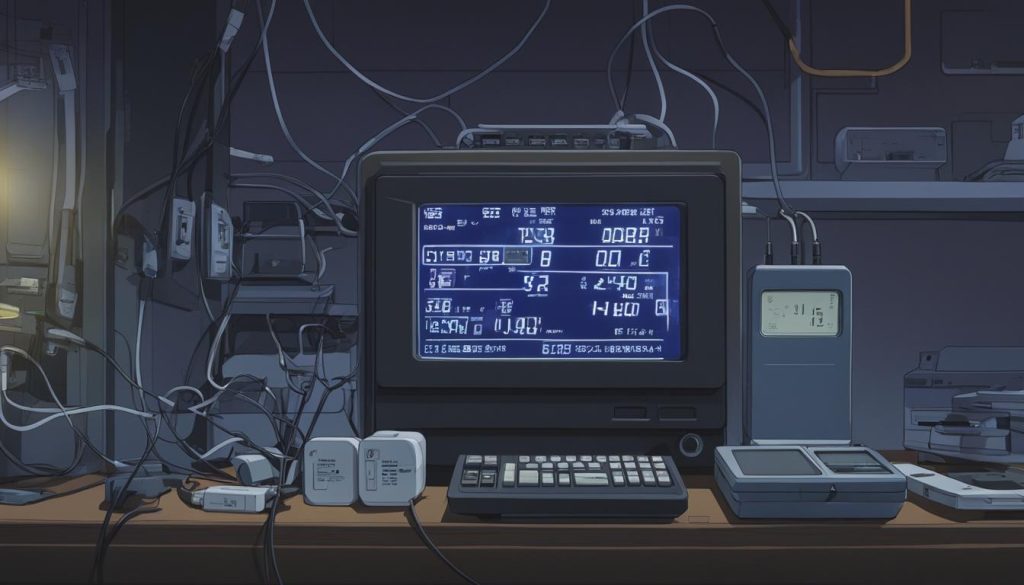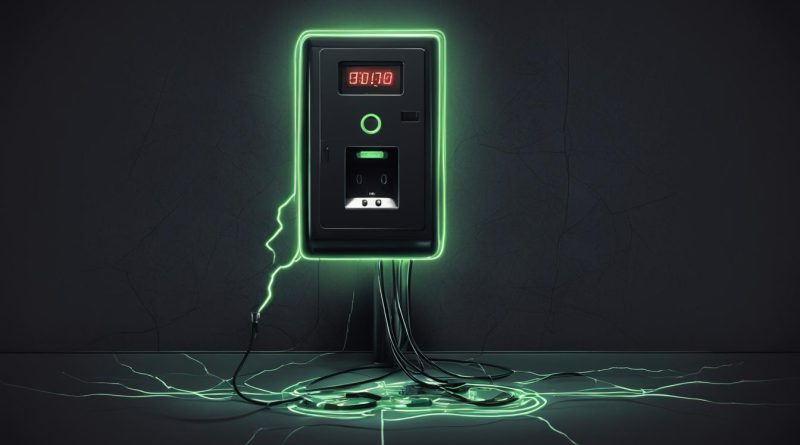Understanding the Standing Charge Electricity Fee
As a consumer of electricity, you are likely to have come across various charges on your energy bills. One of the most crucial components of your electricity costs is the standing charge electricity fee. This fee covers the fixed costs of supplying electricity to your home or business and is applicable regardless of your energy consumption.
While it may seem like an unnecessary charge, it is important to understand the purpose and implications of the standing charge for electricity. This section will delve into the concept of the standing charge, how it is applied, and the factors that determine its costs.
Key Takeaways
- The standing charge electricity fee is a fixed cost covering the supply of electricity to your home or business.
- This charge is applied regardless of your energy consumption and varies across energy suppliers.
- Understanding the standing charge can help you make informed decisions about your energy consumption and costs.
What is a Standing Charge for Electricity?
A standing charge for electricity is a fixed fee that you pay your energy supplier daily or monthly for the maintenance of your electricity supply, regardless of how much electricity you use. It covers the cost of providing electricity to your home, including the maintenance of cables, power lines, and other infrastructure used to deliver electricity to your meter.
The standing charge for electricity differs from other charges, such as unit rates or consumption charges, which vary depending on how much electricity you use. The standing charge is a fixed fee that you pay regardless of the amount of electricity consumed. It is an essential component of your overall electricity costs, and suppliers are required by law to include it in all electricity tariffs.
Although it can be tempting to base your choice of energy supplier solely on the lowest unit rate, it is crucial to consider the standing charge when comparing tariffs. A low unit rate may be offset by a high standing charge, resulting in a higher overall cost of electricity.
Understanding the standing charge for electricity is essential in managing your energy costs effectively and choosing the right energy tariff. If you are unsure about the standing charge for electricity, it is best to consult your energy supplier or an independent energy advisor.

Understanding Electricity Tariffs and Standing Charges
Electricity tariffs and standing charges go hand in hand. Choosing the right tariff and supplier can make a significant difference to your energy bills. Therefore, it is crucial to have a good understanding of both if you want to save on costs.
There are several types of electricity tariffs available, such as Fixed Tariffs, Variable Tariffs, and Economy 7 Tariffs. Each of these tariffs has its benefits and drawbacks. Fixed tariffs offer consistent rates for a set period, providing price stability and budgeting certainty, while Variable tariffs change in line with changes in wholesale energy prices, which can work out cheaper if prices fall, but may also increase if prices rise. Economy 7 tariffs offer cheaper night-time rates, but a higher daytime rate, beneficial for those who use more energy at night.
Standing charges vary from supplier to supplier and depend on factors such as location, meter type, and type of tariff. They are daily charges applied to your energy account to cover the costs of providing electricity to your property and maintaining the national grid. It is worth noting that some suppliers may have higher standing charges, but lower unit rates, while others have lower standing charges but higher unit rates. Understanding these variations is crucial in comparing tariffs.

When comparing tariffs, it is essential to evaluate the total cost of electricity, including standing charges and unit rates. Sometimes, low unit rates may not necessarily translate to lower bills as high standing charges may offset the low rate. Therefore, it is wise to calculate the total annual cost of your energy consumption under each tariff to make an informed decision that suits your energy needs and budget.
Bear in mind that each household’s energy needs are different, so what works for your neighbor may not be suitable for you. Analyze your consumption patterns and seek advice from different suppliers to determine the tariff that best suits you.
Conclusion
Understanding the standing charge electricity fee is crucial in managing your energy bills and making informed decisions about your electricity consumption. By now, you should have a better understanding of what the standing charge entails, how it is applied, and the factors that determine its costs.
Remember that the standing charge is a fixed daily fee that covers your supplier’s costs for maintaining the national grid and providing a connection to your home. It is separate from other charges, such as the unit rate or the VAT, and is an essential component of your overall electricity costs.
When evaluating electricity tariffs, it is crucial to consider the standing charge alongside other fees and charges. Some providers may offer a low unit rate but a high standing charge, while others may have the opposite pricing structure. Comparing tariffs can help you identify the best deal for your energy consumption and budget.
In conclusion, the standing charge electricity is an essential fee that you should be mindful of when managing your energy bills. By understanding how it works and how it varies across suppliers and tariffs, you can make informed decisions about your electricity consumption and costs.
FAQ
What is a standing charge for electricity?
A standing charge for electricity is a fixed daily fee that you pay to your energy supplier regardless of the amount of electricity you consume. It covers the costs associated with supplying electricity to your home, such as maintaining the infrastructure and providing customer support services.
How is the standing charge for electricity applied?
The standing charge for electricity is applied as a fixed amount per day. It is typically included in your energy tariff and reflects the costs incurred by your supplier for providing a continuous supply of electricity to your premises. This charge remains the same regardless of the amount of electricity you use.
What factors determine the costs of the standing charge for electricity?
The costs of the standing charge for electricity can vary depending on several factors. These may include the type of energy tariff you have, the size of your premises, and the region you are located in. Additionally, different energy suppliers may have different standing charge rates, so it’s important to compare tariffs to find the most suitable option for you.
How does the standing charge for electricity differ from other charges?
Unlike other charges on your energy bill, such as the unit rate for electricity consumption, the standing charge is a fixed fee that remains the same regardless of your energy usage. It is separate from the cost per unit of electricity consumed, which is typically measured in kilowatt-hours (kWh).
How do electricity tariffs and standing charges relate to each other?
Electricity tariffs are the pricing structures set by energy suppliers to determine how much you will be charged for the electricity you consume. Standing charges are a component of these tariffs and contribute to the overall cost of your energy bills. Different tariffs may have different standing charge rates, so it’s important to consider both the unit rate and standing charge when comparing tariffs.
How can I compare and evaluate electricity tariffs and standing charges?
To compare and evaluate electricity tariffs and standing charges, you should consider factors such as the unit rate for electricity consumption, the standing charge amount, any discounts or incentives offered by the supplier, and the terms and conditions of the tariff. Additionally, you should assess your own energy consumption patterns and requirements to determine the most suitable tariff for your needs.




